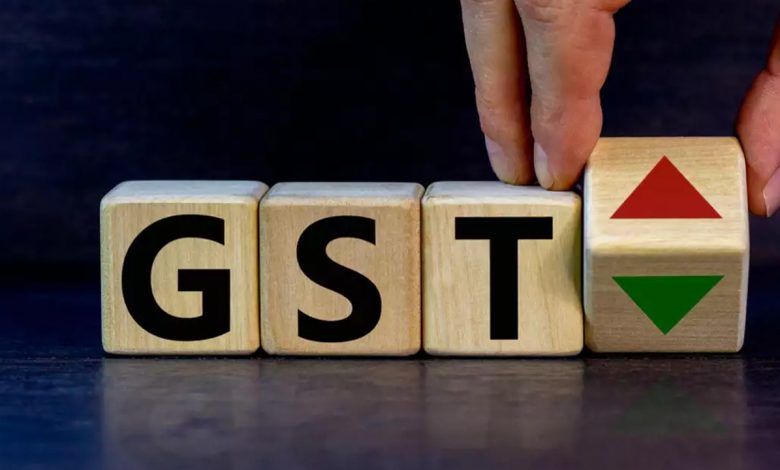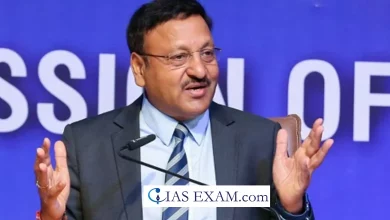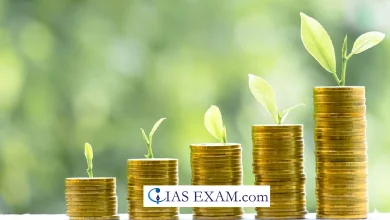Daily Current Affairs for UPSC
Reassigning of Goods and Services Tax (GST) to States
Topic- Indian Economy [GS Paper-3]

Context- The Union government needs to reassign Goods and Services Tax (GST) to States in order to address fiscal imbalance between the Union and State governments.
Key Highlights
Major Economic Changes in Recent Past:
- The divisible taxes of the Union government expanded from two to all the Union taxes, hence enlarging the revenue base to be shared with the States.
- Fiscal responsibility legislation was implemented to constrain the fiscal deficits of States.
- States directly borrow from the market subject to limits imposed by the Central government.
- The Union Planning Commission was dissolved, and thus leading to the withdrawal of Plan grants.
- GST was first introduced in 2017.
Concerns:
- The changes have considerably altered the revenue structure of the states.
- States have little revenue autonomy and they are more dependent on the Central government.
- The vertical fiscal imbalance (VFI) ratio raised to 0.594 from 0.530, indicating that only 40% of the State’s own expenditure is financed by their revenue.
Vertical fiscal imbalance (VFI)
- It means inappropriate allocation of revenue powers and spending responsibilities.
- This state can be remedied by reassignment of revenue increasing powers.
- The simplest of the certain empirical measures of VFI is ‘VFI equals one minus the ratio of the State’s own revenue to own expenditure’.
- If this VFI ratio is zero, the States have enough own revenue in order to meet their own expenditure and there is no need for financial transfers.
Goods and Services Tax (GST)
-
- The GST is a harmonised tax on commodities across the country.
- Individual States have little power to unilaterally change GST.
- Dual Structure:
-
- The Union and State governments concurrently levy GST on commodities with 50% as Central GST (CGST) and 50% as State GST i.e. SGST.
- There is an Integrated GST (IGST) on inter-State trade, and from that 50% of it goes to the final destination State.
Challenges
-
- Disparity Amongst Centre & States:
- The Union government is endowed with more tax powers than the States, while the States are assigned more expenditure responsibilities as compared to the Union government.
- It gives rise to a vertical fiscal imbalance (VFI) between the Union and State governments.
- The unequal tax base with unequal expenditure requirements between the States creates horizontal fiscal imbalance among the States.
- Disparity Amongst Centre & States:
- Increasing vertical fiscal imbalance (VFI):
-
-
- For the last three Finance Commissions (2005-06 to 2020-21), the VFI ratio shows a growing trend.
- For the latest period of 2015-16 to 2020-21, the ratio was 0.530, which means that only 47% of the States’ own expenditure was financed by their own revenue during that period.
-
- Veto for Union Government:
-
- The GST Council gives the Union government a veto in order to thrust its preferences on the States.
Way Ahead
-
- Reassigning of Tax Powers:
- The Union government has certain exclusive power to levy excise duty on petroleum products, and the States have exclusive power to levy excise duty and sales tax on liquor. All other commodities fall under the GST.
- The CGST and the excise duty on petroleum products could be assigned to the States so that the whole GST is assigned to the States.
- There is also a need to bring all commodities, including petroleum products, under GST.
- Reassigning of Tax Powers:
- Harmonisation of GST:
-
-
- The Union government must continue to collect IGST only to settle revenue on a destination basis.
- It will ensure harmonisation of GST across States and GST shall continue as a tax determined by the GST Council.
- Commodity taxation must be moved to State List II of the Seventh Schedule of the Constitution, with a rider that harmonisation of commodity taxation should be maintained.
-
- Removing Veto Power of the Union government:
-
-
- The veto power of the Union government must be removed.
- Then, the GST Council will truly become a body by the States to settle tax issues among themselves, with the Union government facilitating the arrival of consensus among the States on such tax issues.
- It may once again require some constitutional amendments.
-
- Benefits of Reassignment:
-
-
- The assignment of excise duty on petroleum products to the States will hasten the process of integrating taxes on petroleum products into GST and remove the cascading effects of the current excise duty on the petroleum products.
- It will reduce the tax potential of the States, but higher buoyancy of GST should compensate for this revenue loss.
- The positive aspect of the reassignment of tax will be the increase in the tax revenue of the States.
- It will also improve accountability of the States to their people on fiscal matters.
-
- Addressing horizontal fiscal inequality:
-
- The Union government must effect equalisation transfers to address the issue of horizontal fiscal inequality.
- The revenue surplus of the Central government after this tax reassignment should be enough to provide for this equalisation transfer to the States.





.png)



